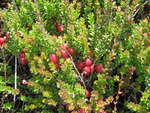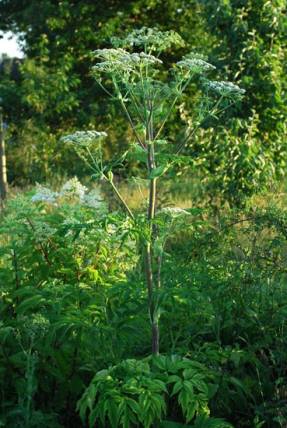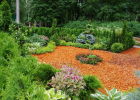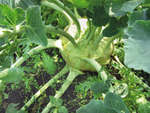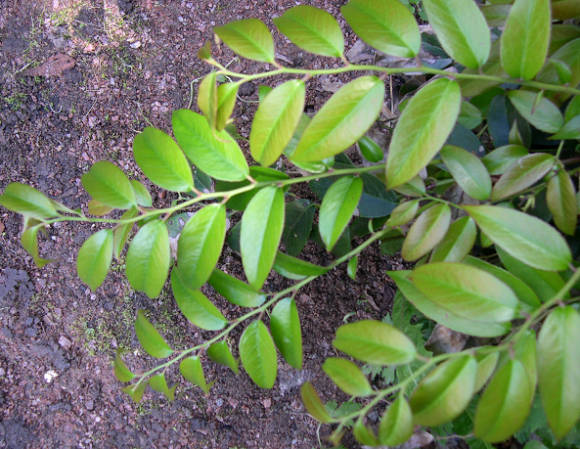In nature, carnations are found in light, dry places - meadows, mountain and ravine slopes, talus. Therefore, when planting them on flower beds, you have to create the same conditions. Carnations are most often used in light-colored mixborders, along the edge of flower beds and on alpine slides. These plants absolutely do not tolerate stagnant water and lack of light, but they tolerate drought well. Forming dense sods, they suffer only from rhizome weeds such as wheatgrass, thistle, dandelions, which are difficult to remove from carnation bushes. Therefore, before planting, you need to very carefully clean the soil from extraneous roots and rhizomes. Please also note that carnations are sensitive to smoke and gases, so they should not be located near the roadway and garages. Sand is imperative, because with a deficiency of silicon in carnations, the stems break during flowering.
 |  |
Carnations reproduce both by seeds and vegetatively. In the latter case, 2 methods are possible - cuttings and layering. Repair greenhouse carnations have recently multiplied almost exclusively by tissue culture, which gives planting material free of viruses.
Reproduction
Carnation needs to be propagated regularly and quite often, because many species are young, i.e. live 3-4 years, but really perennials lose their decorative effect with age, as their bushes sprawl, thin out and "go bald" at the base. Oddly enough at first glance, very few carnations reproduce by dividing the bush. Most species have a single taproot, from which shoots diverge. Such bushes, no matter how lush they are, cannot be divided. Sometimes some of the shoots take root on their own, giving new plants, but the bulk of carnations, especially varietal ones, need special vegetative propagation.
By cuttings all carnations, without exception, multiply, but in annual species this does not make sense. For grafting, use calcined sand or perlite. This is important because cloves can easily develop fungal infections. It is better to graft in late May - early June, when the vegetative shoots are already well distinguishable from the peduncles. For rooting, vegetative shoots 3-9 cm long are used, depending on the type of carnation, but not less than 3-4 pairs of leaves. Longer cuttings can also be taken, especially from tall species. The cut is made just below the knot. The leaves from the two lower nodes must be removed. Along the entire length of the lower internode with a very sharp knife or scalpel, longitudinal cuts are made for 1/3 of the stem thickness. The cut cuttings are placed in a substrate and provide them with sufficient air humidity, covering them with a film or jar. Cutting large quantities of material can be carried out in a cold greenhouse. It is also useful to use a fogging installation, but without heating the soil. Roots are formed in 2-3 weeks.
Reproduction layering possibly in carnations with long vegetative shoots. To do this, a longitudinal incision is made on the internode on the underside to the depth of the thickness of the stem, then this part of the shoot is pinned to the ground with a cut down, covered with earth and regularly moistened the soil. After the formation of roots, new shoots are formed from the internodes located above the dusting site. The new plant can be separated from the mother plant and transplanted. Layers can also be obtained by covering the base of the bush with moist earth, the signs of the appearance of roots are the same as those of the shoots-layering.
 |  |
By dividing the bush very few species breed that form sods of easily rooting shoots, for example, bearded carnation, it is also Turkish, and grass. The division is best done in early spring, then young plants bloom in the first season.
Seeds species grown as annuals and biennials breed more often.Carnations are often marketed as cultivars, meaning that plants grown from seed are known to have different colors.
Carnations are sown in pots with sandy soil in April-May. The optimum soil temperature for germination is + 16 + 20оС. Seedlings are weak, therefore pots are required so as not to lose seedlings. When the seedlings have 3-4 pairs of leaves, they are carefully transplanted into new pots or on a school. They are transplanted to a permanent place next spring.
Sowing cloves in a permanent place is inconvenient. They grow slowly and either get lost or become clogged with weeds when sowing sparsely, or most of them will die from crowding when sowing densely. In open ground, carnations can be sown either in early spring or before winter. With spring sowing, most species emerge for more than two weeks, with subwinter sowing - 1-2 weeks after the snow melts. In the first year, perennials form rosettes, winter in this form and bloom in the second year.
Annual carnations of the Shabo group and Chinese carnations grown as annuals are sown in January-February in boxes at a temperature of + 12 + 15 ° C in a mixture of leafy, soddy-clay soil and sand in a ratio of 1: 2: 1. When real leaves appear, they dive into the same mixture with the addition of humus. Plants are kept at a temperature of + 8 + 12 ° C so that they do not stretch, placing them in the brightest places, or additionally illuminate them. They are planted in the ground in May.
Diseases and pests
Diseases are rare in carnations growing outdoors in good conditions. Greenhouse carnations are prone to a huge number of diseases. On the street, the development of diseases is facilitated by dampness, thickening of plantings and an excess of nitrogen with a lack of potassium, therefore, carnations cannot be fed with pure nitrogen fertilizers and manure, especially fresh. It is better to use complex mixtures that always contain potassium. Bacterial diseases are transmitted by pests or enter the plant if it is damaged. Usually these are wet rot, which also affect gladioli, hyacinths, irises. Common fungal diseases are also found in carnations and tulips. Because of common diseases and some pests, it is better not to plant carnations next to them. Viral diseases of carnations cannot be treated, and their pathogens remain in the soil for a very long time, so the place of planting carnations should be changed at least once every 5 years.
Painted spots with a velvety bloom - on the leaves and stems - are the result of fungal diseases. They are ubiquitous and often cause plant death. They are especially harmful in humid warm weather. Fungal lesions are treated with copper preparations and other fungicides. Fusarium is especially dangerous, since in this case the fungus develops inside the plant and does not die during processing. The root system and the base of the stem rot, the leaves and stems turn yellow and curl. Sick plants must be removed and destroyed, the soil should be properly watered with fungicides twice, with an interval of a month.
 |  |

